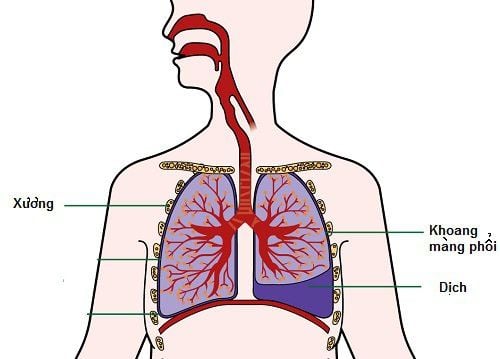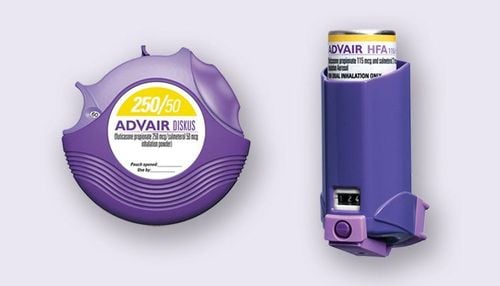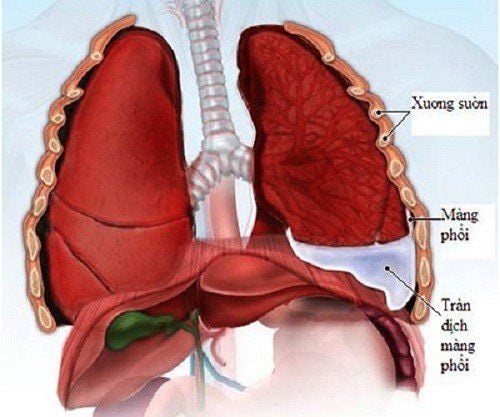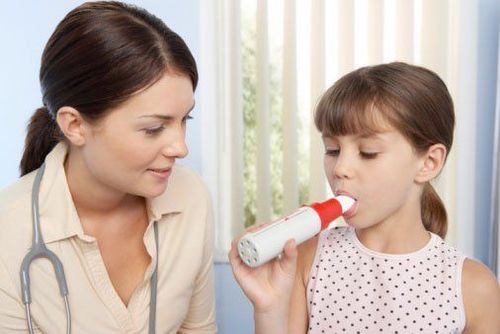This is an automatically translated article.
Article by Master, Doctor Nguyen Ngoc Bach - Department of General Internal Medicine - Vinmec Times City International Hospital
Besides chronic obstructive pulmonary disease with drugs, there are many treatment measures that patients need to know and should follow to improve health and reduce the risk of complications.
1. Learn about chronic obstructive pulmonary disease
Chronic obstructive pulmonary disease (commonly referred to as "COPD") is a condition in which the airways in the lungs become inflamed and narrow (chronic bronchitis) and the gas exchange units of the lungs, the alveoli, are damaged ( emphysema ).
Smoking is the most common cause of COPD. As the lungs become more damaged over time, breathing and gas exchange become increasingly difficult and the damage spreads, the lungs can also become more difficult to get enough oxygen into the blood and remove carbon dioxide. redundancy. These changes all lead to shortness of breath and other symptoms.
Treatment for COPD can often help control shortness of breath and cough and can sometimes slow the progression of the disease. But the most important thing you can do to improve is to stop smoking and avoid secondhand smoke.

Uống thuốc là nguyên nhân chính gây COPD
2. Methods of treating chronic obstructive pulmonary disease
Besides drug treatment, there are many measures to treat chronic obstructive pulmonary disease that patients need to know and should follow to improve health and reduce the risk of complications.
2.1 Quit smoking and avoid secondhand smoke
If you don't know what to do with chronic obstructive pulmonary disease, the first and most important part of any COPD treatment plan is to stop smoking and avoid exposure to secondhand smoke. This is true regardless of whether you are in the mild or severe stages of the disease. Stopping smoking can help slow the progression of COPD, no matter how long you've been taking it. Quitting smoking can be difficult, but patients can see their health care provider for help with counseling and prescription medication.
2.2 Learn and know how to use inhaled and inhaled medications
Many drugs used to treat COPD are contained in inhalers, sprays for use through the mouth to deliver drugs into the bronchi, depending on the attached device of the manufacturer, the way the drug is used on the spot helps to have a fast and effective drug action time. fruit. Some medicines come in a nebulizer, which is a device that turns medicine into a fine mist that you breathe in. There are many different types of inhaler and nebulizer devices, and each requires a slightly different technique to be used effectively. Your doctors can help teach you how to use your inhaler to make sure all the medicine gets to your lungs. At each routine visit you will be asked and helped by the doctors if you have difficulty using such forms of medicine. When used proficiently, you will feel comfortable and effective of the drug.
2.3 Pulmonary rehabilitation exercises
The pulmonary rehabilitation program teaches you how to help improve the symptoms of your existing lung disease. This includes education about your medical condition, exercise instruction, social support, and instruction in breathing techniques.
Pulmonary rehabilitation may include scheduled mini programs once or twice a week for 8 to 12 weeks. Upon completion of the program, patients will continue to exercise on their own with prescribed medication and regular checkups.
Pulmonary rehabilitation programs have been shown to improve a person's ability to exercise, improve quality of life, and reduce the frequency of COPD exacerbs (when symptoms flare up more than usual). often). Even for people with severe shortness of breath, rehabilitation programs are effective.

Khám bệnh định kỳ giúp kiểm soát được tình trạng bệnh
2.4 Routine examination
This is an important part of managing your COPD. Healthcare professionals can meet and talk with patients about their symptoms, treatments, and adherence to medication and how appropriate and effective it is. In addition, the patient can provide other health problems that may affect COPD to the doctor. The frequency of your visits will depend on your particular situation and health, but you'll likely have appointments at least every few months.
Vinmec International General Hospital with a system of modern facilities, medical equipment and a team of experts and doctors with many years of experience in medical examination and treatment, patients can rest assured to visit. examination and treatment at the Hospital.
To register for examination and treatment at Vinmec International General Hospital, you can contact Vinmec Health System nationwide, or register online HERE.
MORE
Symptoms and treatment of chronic obstructive pulmonary disease Tests to help detect chronic obstructive pulmonary disease Breathing guide in chronic obstructive pulmonary disease














